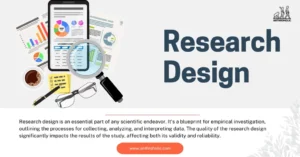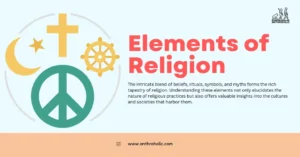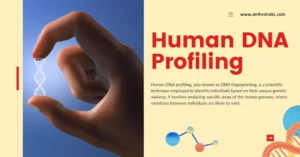AI Answer Evaluation Platform Live Now. Try Free Answer Evaluation Now
Master humanity with data-driven anthropology: uncover culture, society and mind
Humanity is data now, or at least, that’s how modern anthropology begins to see it. The faces, gestures, clicks, movements, and messages that once filled streets and villages are now mapped, counted, and visualized. Data-driven anthropology is a term that feels both futuristic and deeply human. It mixes the rigor of numbers with the chaos of culture. It’s not only about collecting information but understanding how that information mirrors who we are, what we believe, and how we change.

In traditional anthropology, one could spend months in a remote community, taking notes under the shade of a tree. Today, an anthropologist can explore a digital community with a single dashboard. According to a 2024 report by the Human Science Observatory, over 70% of modern social research includes digital data collection. A scroll through social media feeds can now reveal social behavior patterns once invisible to the human eye.
From Villages to Algorithms
People still gather. The difference? The place has changed. It might not be a market square anymore but an online forum, a gaming chat, or a shared playlist. Digital ethnography, a branch of modern anthropology, studies these new tribes. It listens to how emojis replace words, how silence in a chat means something, how online rituals mirror old spiritual habits.
Through algorithms, human scientists now trace migration patterns not only in maps but in hashtags. Political emotions can be tracked in real time through spikes in certain words. Love, anger, and hope, quantified, compared, and visualized. This is not reducing humanity to numbers; it is using numbers to bring hidden stories into light.
Yet, a strange paradox remains. The more data we have, the less we sometimes understand. A flood of information can blur meaning. Anthropology, therefore, becomes a balancing act: data is the tool, but empathy remains the key.
Culture as a Living Equation
Culture has always been a mystery, fluid, adaptive, full of contradictions. Now, it becomes measurable. Cultural analysis powered by AI in research allows scientists to find connections across centuries. Imagine comparing medieval trading customs with online shopping habits and discovering similar patterns of trust and risk. Artificial intelligence can detect emotional tone in text, uncover hidden sentiment in large populations, or analyze the spread of new slang across continents.
AI doesn’t replace the anthropologist; it expands their reach. For instance, a project by the Global Culture Lab in 2023 analyzed 500 million social media posts across 25 countries, revealing how collective emotions after global crises shift within 72 hours. It’s a scale no human could process alone, yet the interpretation still demands human intuition.
Culture, then, becomes a living equation: data gives the numbers, humans give the meaning.
The Math Behind the Human Story
Hidden beneath the warmth of anthropology lies an exacting skeleton, mathematics. Counting, comparing, predicting: the quiet pulse of numbers runs through every discovery. Even emotions can be modeled statistically, using probability and network theory to understand how ideas spread.
In some classrooms, young students are already exploring these links through practical tools. A math solver app is available on the App Store, though created for education, has become an unexpected companion for human science. Students can model social inequality using basic equations, simulate population changes, or calculate probability in decision-making behavior. These apps don’t just solve algebra, they translate abstract cultural patterns into measurable insight.
Think of it: one moment you’re solving equations; the next, you’re analyzing how generosity or fear moves through society. Numbers start telling stories.
Society Through the Data Mirror
Social behavior is not random. It has patterns, loops, cycles, though not always visible. Through data-driven anthropology, we can now recognize when collective behaviors emerge: why people protest, why trends fade, why cooperation increases in crisis.
For example, research showed that online communities experience “empathy spikes” every 12 to 18 weeks, usually after shared global events. That rhythm, almost like breathing, suggests that human connection follows waves of collective attention. This insight isn’t just academic; it shapes policies, marketing, even humanitarian responses.
The challenge is ethical. When data becomes the mirror of society, who controls the reflection? Ethical anthropology must question ownership, consent, and transparency. Numbers reveal, but they can also expose. Therefore, human sciences are now asked to merge with digital ethics, forming a new hybrid discipline that safeguards both truth and privacy.
The Mind as a Dataset and a Mystery
Every human brain is a generator of data, millions of signals, reactions, micro-decisions. Yet, the more we quantify the mind, the more mysterious it becomes. Neuroanthropology, where brain science meets cultural study, uses biometric sensors, behavior tracking, and AI modeling to decode thought patterns in context. It observes how stress differs across cultures, how social norms alter emotional processing.
And still, there is something that resists full digitization. Culture breathes in metaphors, myths, dreams. The human mind dances between reason and meaning, and not every step leaves a trace in data. Human sciences remind us that numbers describe, but do not define, the totality of being.
Toward a New Human Science
Data-driven anthropology does not seek to replace storytelling. It enhances it. It helps build bridges between quantitative logic and qualitative truth. The future anthropologist might be both a coder and a poet, reading graphs and myths with the same curiosity.
In a world drowning in information, anthropology becomes a compass. It teaches us how to see people behind patterns, how to read emotions behind metrics, how to merge precision with compassion. Whether through digital ethnography or mathematical modeling, the goal remains the same: to understand humanity, not as static, but as dynamic, ever-evolving, and deeply connected.
Conclusion
In conclusion, mastering humanity through data means mastering balance. Between science and art. Between logic and empathy. Between what can be measured and what must simply be felt. The tools change, algorithms, AI, even a simple math solver app, but the heart of anthropology remains unchanged: the quest to uncover the story of who we are.



